Discovering the Art of Travel Kiteboarding Adventures
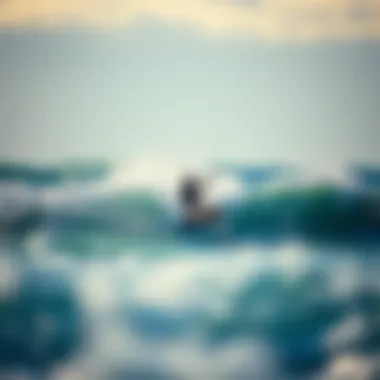
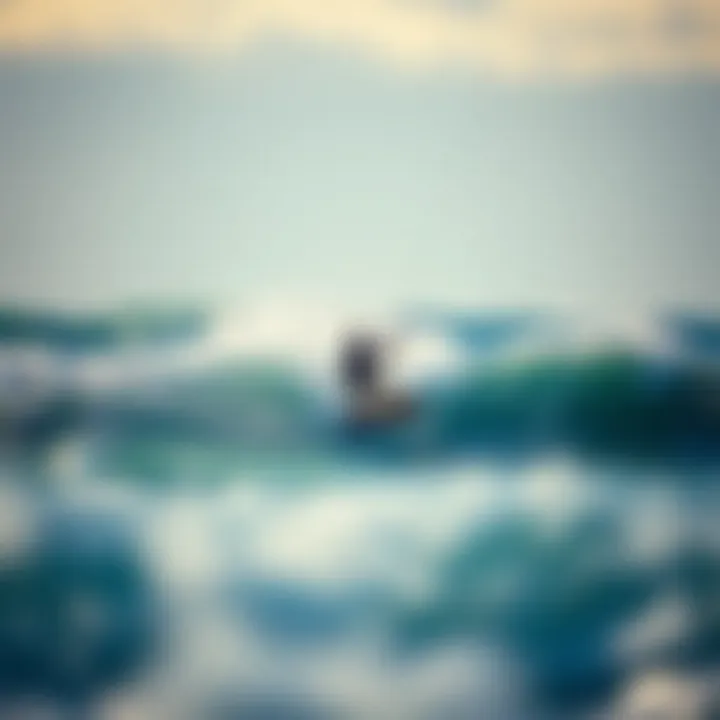
Intro
Traveling with a kiteboard in tow opens up a world of thrilling landscapes and exhilarating experiences. Whether you're a seasoned kiteboarder or just dipping your toes into the sport, understanding the nuances of travel kiteboarding is crucial. This article explores various aspects such as selecting the right gear, honing your skills, and navigating through some of the world's most spectacular kiteboarding destinations.
Connecting with fellow kiteboarding enthusiasts can not only enhance your travels but also provide a sense of community whether you're in Sharm El Sheikh or Cabarete. As you embark on your journey, keeping in mind the essential tips and tricks can be the difference between a memorable experience and a frustrating one.
So, let's dive deeper into the world of travel kiteboarding, starting with the gear that will be your lifeline on the water.
Gear Selection
Selecting the right gear is the backbone of any successful kiteboarding adventure. Different conditions call for different equipment; understanding these distinctions can either make or break your experience.
Types of Kites
Kites come in various shapes and sizes, each designed for specific conditions and riding styles. Here’s a breakdown:
- C-Kites: Best for experienced riders who enjoy tricks and performance. They provide crisp handling and lots of power.
- Delta Kites: Known for their versatility and stability. Great for beginners but can also help advanced riders improve their game.
- Bow Kites: These offer a larger wind range and are excellent for beginners due to their ease of use, providing safety through depower options.
- Foil Kites: Ideal for light wind conditions, these kites have larger surface areas and can stay aloft with minimal wind, which is fantastic in some tourist spots where the breeze might be sporadic.
Important Note: Always check the wind forecast for the area you will be in as it can drastically affect which type of kite you should bring.
Choosing the Right Board
Your board is where the magic happens. Different boards excel under varying conditions. Here’s what to consider:
- Directional Boards: Excellent for surf-style riding, favored in bigger waves.
- Twin-Tip Boards: Great if you want to ride in both directions; they’re typically favored for flat water.
- Foil Boards: Great for those who enjoy floating above the water's surface but require a bit more skill to master.
When choosing your board, consider factors such as size, shape, and material. A larger board provides more support and stability, especially for beginners, while a smaller board allows advanced riders to achieve higher speeds and perform complex maneuvers.
"Getting the right gear can open up a whole new level of enjoyment and performance, whether you're slicing through a wave or cruising on flat water."
Skill Development
With the right gear in hand, the next step is to sharpen your skills.
Essential Techniques
Mastering key techniques can enhance your overall kiteboarding experience significantly. Here are some fundamental skills to focus on:
- Kite Control: The more you practice, the better you'll get at handling your kite. Understanding how to steer and maneuver can lead to smoother rides.
- Body Position: Keeping your body in the correct stance is essential for balanced rides and ensuring you can adapt to varying water conditions.
- Water Starts: Efficiently getting up on the board can be tricky. Multiple sessions practicing this can pay off big when the wind is just right.
Progression Tips
As you advance from a novice to a seasoned rider, consider these tips to elevate your kiteboarding skills:
- Take Lessons: Getting expert guidance can be invaluable. A good instructor can point out flaws in your technique you may not see.
- Set Goals: Challenge yourself with new tricks or riding conditions.
- Join a Community: Whether online or offline, sharing experiences with other kiteboarders can offer new insights and tips.
In the world of travel kiteboarding, your journey isn’t just about riding the waves but about the adventure that comes with it. From the thrill of mastering new techniques to the excitement of exploring hidden gems across the globe, every kiteboarding experience is unique. As we progress, let’s dive into the myriad destinations that await kiteboarders seeking adventure.
For further information on kiteboarding, you can visit resources like Wikipedia or engage with communities on Reddit for tips and personal stories.
Prologue to Travel Kiteboarding
Travel kiteboarding is more than just a sport; it’s a lifestyle that merges adventure with freedom. As kiteboarding enthusiasts seek new horizons, this unique form of water sport has gained traction across the globe. It offers a chance to connect with nature, meet new people, and experience different cultures, all while soaring above the waves. For those who embrace travel kiteboarding, the world becomes their playground, and each destination unveils a new chapter in their kiteboarding journey.
Understanding travel kiteboarding involves diving into its core elements, from the definition of the sport to its allure as a travel choice. As kiteboarders gear up to hit the open seas, there are fundamental factors that enhance this exhilarating experience.
Defining Travel Kiteboarding
Travel kiteboarding refers to the practice of kiteboarding in various locations around the world. It's not just about riding a board attached to a parachute-like kite; it's about discovering flat waters, warm winds, and lush beaches. This sport requires specialized equipment, skillful control, and an adventurous spirit. The definition of travel kiteboarding also encompasses the journey itself, which often begins long before the kite's lines are even attached. Selecting a destination that balances ideal wind conditions and scenic landscapes is part of the thrill.
In essence, travel kiteboarding can be seen as a bridge connecting kiteboarders with diverse shores. It encourages the exploration of beautiful and sometimes hidden bodies of water that offer the right wave patterns and consistent winds.
The Appeal of Kiteboarding as a Travel Sport
The appeal of kiteboarding as a travel sport lies in its unique ability to blend thrill with exploration. Here are a few key reasons why kiteboarding captivates travelers:
- Versatility of Locations: From the turquoise waters of the Caribbean to the windswept beaches of Portugal, the options are endless. Each spot has its own charm and conditions that can cater to different skill levels.
- Adventure and Culture: Traveling to kitesurf opens avenues to immerse oneself in local customs and cuisines, adding richness to the kiteboarding experience. Meeting local riders and participating in local events can forge lasting friendships.
- Connection with Nature: There’s something deeply fulfilling about harnessing the power of nature. The rush of wind and water create a strong bond with the surrounding environment.
- Challenging Growth: Each new location presents its own set of challenges. Whether it’s mastering the gusty winds or adapting to unfamiliar waters, these challenges encourage riders to push their boundaries, thus improving their skills.
Ultimately, the combination of new experiences, environmental connection, and the pure adrenaline that kiteboarding brings makes it a standout choice for those seeking adventure on their travels. This comprehensive understanding sets the stage for an enriching kiteboarding journey, ensuring every rider is well-equipped to tackle the waves while gaining deeper insights into each destination.
Essential Gear for Kiteboarding Adventures
When it comes to travel kiteboarding, having the right gear is as crucial as knowing how to ride. The equipment you choose not only affects your performance on the water but also your safety and enjoyment. Whether you are a novice or a seasoned rider, understanding the essentials of gear can vastly enhance your kiteboarding experience.
Choosing the Right Kite
The kite is the heart of kiteboarding, and different types suit various conditions and skill levels. The size and shape of the kite influence how it responds to wind, how much lift it provides, and ultimately your control. Generally, larger kites are better for lighter winds, while smaller kites excel in stronger winds. It’s a balance you'll need to find based on your weight and riding style.
Some of the top brands in the market include North Kiteboarding, Ozone, and Slingshot. When selecting a kite, also consider whether you prefer a hybrid or specific type like a bow or C-kite. A hybrid kite offers versatility, while a C-kite may provide precision for tricks. Investing in a high-quality kite that fits your personal style can make all the difference when you're out on the water.
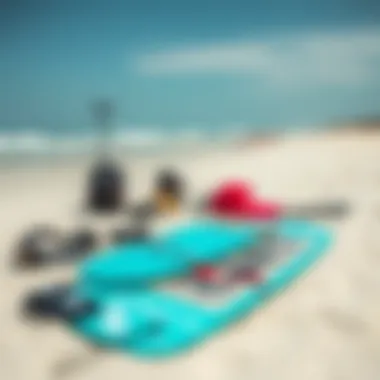
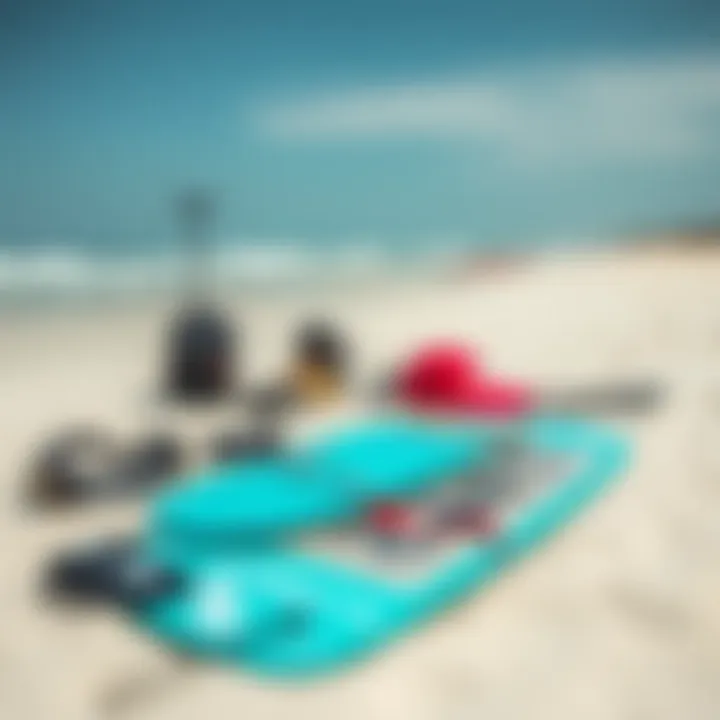
Harness and Its Importance
Most riders might not give much thought to the harness, but it’s more critical than you might think. A quality harness ensures you can comfortably bear the pull of the kite without straining your body. You have two main styles to choose from: seat harnesses and waist harnesses.
- Seat Harness: Good for beginners or those who prefer more support on their backside. These are worn lower and often provide extra back support.
- Waist Harness: Offers more freedom of movement, making it preferable for those into tricks and agile movements.
It’s imperative to ensure a proper fit. Too loose, and it will ride up; too tight, and it will become cumbersome. A well-fitted harness becomes an extension of your body, allowing you to focus on mastering tricks instead of adjusting gear.
Boards: Finding Your Perfect Fit
Choosing the right board is like picking the perfect dance partner; it should complement your style. Boards vary in materials and volume, directly affecting ride characteristics. Some are built for speed and others for stability. If you plan on riding in choppy water, a board with a longer length might be beneficial as it can cut through waves effortlessly.
A common choice among riders is the twin-tip board due to its versatility. When shopping for a board, think about:
- Skill Level: Beginners often benefit from wider boards for balanced stability.
- Riding Style: Freestylers might prefer a more flexible board, while free riders often opt for something more rigid for high performance.
- Conditions: Remember your preferred riding locales—this will affect your board choice significantly.
Safety Equipment Essentials
Before you hit the water, always prioritize safety. Accidents can happen, and being prepared is half the battle. Here�’s a list of must-have safety gear:
- Helmet: Protects your head from potential falls or collisions with other riders.
- Impact Vest: This gear offers some buoyancy, which is very useful in case of an unexpected dip or tough landings.
- Leashes: A wrist or quick release leash is essential to avoid losing your kite in case of a mishap.
Also, make sure you have a good understanding of your local water conditions, as environments vary widely based on the spot. Whether it's high tides or lurking rocks, knowing your surroundings can help prevent accidents.
In summary, the right gear doesn’t just enhance comfort and performance; it's your lifeline while navigating the thrills of kiteboarding. Ensuring proper choice and fitting will help transition smoothly from novice to expert even among the waves.
Preparation for Travel Kiteboarding
Preparation plays a crucial role in the realm of travel kiteboarding. It’s not just about wheeling your gear to the airport or picking a random beach; it’s about thoughtful planning that can make the difference between a smooth sailing experience and a trip mired in complications. This section dives into the essentials of preparation—setting the stage for kiteboarding adventures that could be the highlight of your travel exploits.
Planning Your Destination
Selecting the right destination is a pivotal step for any kiteboarding enthusiast. Considerations should encompass wind conditions, water type, and local regulations. Here are key points for effective destination planning:
- Wind Patterns: Research the average wind conditions for the spot during your travel dates. Some areas might surprise you with their seasons. For example, Tarifa in Spain is known for its reliable winds, especially from spring to fall.
- Geographical Features: Assess whether the location has sandy beaches, lagoons, or reefs. Each has its own set of advantages and challenges for kiteboarders.
- Local Community and Schools: Engage with local kiteboarding shops and schools. They offer essential insights and sometimes even great deals on rentals or lessons. Websites like kiteboarding.com can guide you to reputable schools.
The right location not only enhances your experience but also ensures your safety. Knowing the lay of the land could steer you clear of hazards lurking beneath the surface.
Packing Strategically
When preparing for a kiteboarding trip, sorting out your packing can feel like solving a Rubik's Cube—complex but necessary. Proper packing revolves around prioritizing essential gear while considering the constraints of travel. Here are tips to help you:
- Kites and Sizes: Bring a selection of kites suitable for varying wind conditions if possible, but try to minimize weight. A good compromise is a two-kite setup—one for lighter winds and one for stronger days.
- Lightweight Gear: Opt for lightweight harnesses, boards, and other equipment to facilitate easier transport. It can be a game changer once you are tired after a long travel day.
- Essentials First: Always put your safety and maintenance gear at the top of your packing list. Things like repair kits, spare lines and safety leashes are easily overlooked but can be a lifesaver.
Lastly, check the baggage restrictions of your airline to avoid costly surprises. Many kiteboarders learn too late that some airlines have strict policies on gear size.
Travel Logistics: Flights and Transport
Travel logistics can be the fly in the ointment if not handled well. When heading to kiteboarding hotspots, you must consider how to best transport your gear and navigate through different transportation systems. Here’s what to keep in mind:
- Direct Flights: Whenever possible, book direct flights to your destination. This minimizes the hassle of layovers, reducing the chances of lost luggage. Look for airlines recognized for their kiteboarding-friendliness, like Qatar Airways.
- Transport Options: Upon arrival, familiarize yourself with local transport options; whether that’s taxis, buses, or bike rentals, having this info ahead of time can cut down on stress. In many cases, local kite schools or shops offer shuttle services especially designed for kiteboarders.
- Staying Close to Your Spot: Consider lodging that’s in proximity to kiteboarding locations. This could mean a casual beach hut or a local hotel that caters specifically to kiteboarders.
Overall, carefully managing logistics decreases the likelihood of complications and allows you to focus on what truly matters: riding the wind and catching waves.
It's often said that "failing to prepare is preparing to fail." The essence of travel kiteboarding hinges on how well you plan your adventure.
Kiteboarding Destinations Worldwide
Exploring the diverse realm of kiteboarding destinations is crucial for any traveler wanting to merge the adventure of travel with the thrill of kiteboarding. Each destination offers unique conditions, breathtaking sceneries, and varying cultural experiences. Whether you are just starting or are already shredding the waves, understanding where to go can enhance both your skill level and the enjoyment of your overall journey.
Kiteboarding is more than just a sport; it's a lifestyle. Locations influence not only the level of challenge you face but also the camaraderie you can experience with other kiteboarders globally. A poor destination can lead to frustrating sessions, while the right spot can unlock a world of invigorating opportunities and networking possibilities.
Top Locations for Beginners
For those new to the sport, certain destinations cater specifically to novices. These locations often have gentle winds and flat water, minimizing risks and maximizing fun.
- Cumbuco, Brazil: This spot boasts consistent winds and warm waters, making it ideal for those just starting. Local schools offer lessons tailored for beginners, along with equipment rentals to ease the burden of packing your own gear.
- Cabarete, Dominican Republic: Known for its friendly vibe and multiple schools, beginners can take advantage of shallow waters, along with an active kiting community for support. You can find beachfront accommodations just a stone's throw from the action.
- Tarifa, Spain: Dubbed the kiteboarding capital of Europe, Tarifa offers lessons in various conditions, making it a perfect pick for those learning the ropes. The lively town is a melting pot of cultures and activities, ensuring a rich experience off the water as well.
"Learning to kiteboard can be overwhelming, but choosing the right destination can ease that burden tremendously."
Advanced Spots for Experienced Riders
As skills progress, so does the desire for more challenging environments. Experienced riders seek locations that offer stronger winds and more dynamic conditions.
- Maui, Hawaii: This gem is famed for its powerful winds and impressive waves, providing a stage for advanced maneuvers. Kite Beach in Paia is specifically known for its challenging conditions and experienced kitesurfers.
- Hatteras Island, North Carolina: Offers a range of conditions from flat water in the sound to challenging waves at the ocean. Advanced riders rave about the variety of spots, enabling them to push their limits and try new tricks.
- Cape Verde: With consistent winds year-round, this location provides both flat water and challenging waves. It's an exotic destination that attracts experienced kiteboarders looking to refine their skills while enjoying the stunning landscapes.
Emerging Kiteboarding Hotspots
The kiteboarding community constantly evolves, making room for new standout locations that have begun to gain traction among enthusiasts.
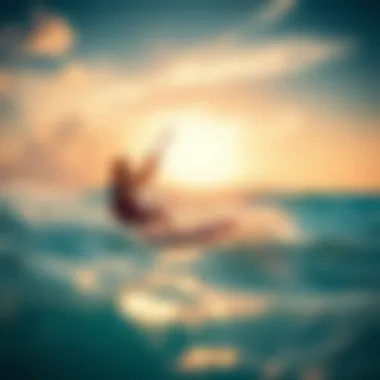
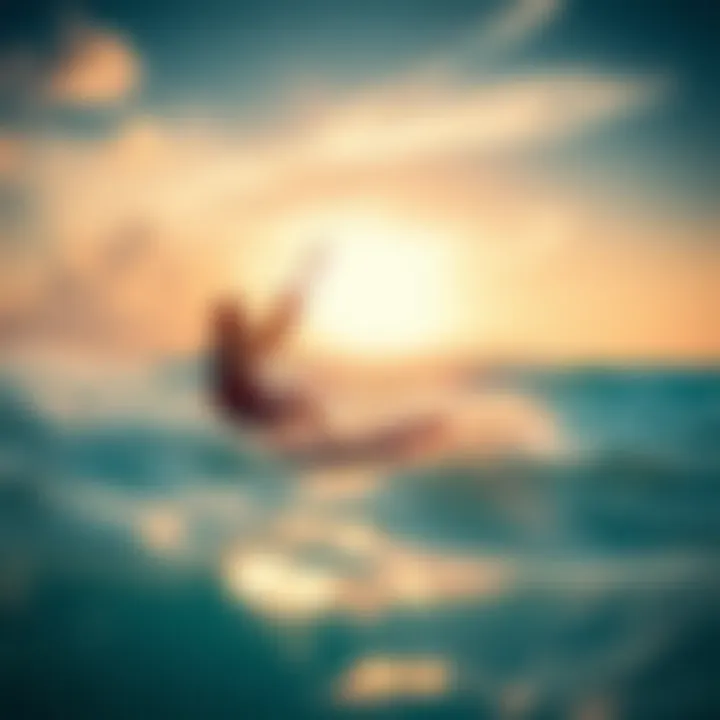
- Sri Lanka: Over the past few years, this island has become a hidden treasure for kiteboarders. Kalpitiya offers stunning lagoons and flat waters, making it popular among those seeking something new.
- Egypt's Red Sea: Locations like El Gouna are rising in popularity due to their ideal wind conditions and beautiful waters. With consistent thermal winds, kiteboarding in Egypt also comes with a unique blend of history and culture to explore when off the water.
- Thailand: Kitesurfing spots, like Hua Hin and Koh Phangan, are becoming recognized for their favorable conditions and laid-back environments, offering both cultural rich activities as well as exciting sessions on the water.
With the world of kiteboarding expanding rapidly, keeping track of emerging hotspots is essential for kiteboarders who want to ride the next wave of opportunities. Each destination provides its unique flavor to the sport, ensuring that there’s always something new to explore.
Techniques for Travel Kiteboarding
When it comes to travel kiteboarding, mastering techniques is crucial. Not just to carve through waves, but to elevate the overall experience. Skilled kiteboarders understand that familiarity with various techniques can lead to safer and more enjoyable rides. Knowing how to handle different situations, especially when traveling, can make or break an outing.
Mastering the Basics
Before diving headfirst into complex tricks or challenging locations, every rider needs to build a solid foundation. The basics include how to launch and land your kite, as well as mastering your stance on the board. One cannot overemphasize how crucial proper kite control is. Knowing how to steer can save you from precarious situations like getting tangled in the lines or losing control during a gusty wind.
Consider practicing these foundational skills in a controlled environment before attempting them in unfamiliar waters.
- Proper Kite Launching: Ensure your lines are untangled. Stand towards the edge of the window to facilitate a clean lift-off.
- Water Starts: Roll onto your back, securing your board with your feet. Use a well-timed pull on the kite to pop up smoothly.
- Riding Position: Keep knees bent, balance over your board, and use your body to control your speed.
Building confidence in these skills before setting off on your travels is essential. Otherwise, the gorgeous location can quickly turn into a source of stress.
Progressing to Advanced Maneuvers
Once you’ve got the basics down, it’s time to push your limits. Advanced maneuvers come into play when you want to impress and enhance your skillset. These include tricks such as jumps, spins, and board grabs. Here, it becomes vital to understand not just the movement required but also the right timing and wind conditions.
Jumping involves the coordination between kite lift and board positioning, while spins require both a good eye for balance and adept kite control. The thrill of landing your first jump or completing a 360-spin is unmatched.
A few tricks to consider as you advance:
- Backrolls: Initiate with a solid jump, then rotate your body backward to complete a roll.
- Handle Passes: A step further that involves passing the kite handle behind your back while in the air.
- Kiteloops: When confidence is key, learning to loop your kite can lead to exhilarating sensations and impressive heights.
Understanding Wind Conditions
Arguably, one of the most crucial aspects of kiteboarding is the ability to read wind conditions. Not all wind is created equal; thus, being able to interpret patterns in the air can significantly enhance your experience. Good kiteboarders adjust their techniques depending on the strength and direction of the wind.
- Light Winds: Ideal for beginners, as it’s easier to control the kites. However, know that this requires larger kites for better lift.
- Strong Winds: More experienced riders may thrive here but risks increase. It’s vital to select smaller kites and hone your skills in controlling speed and lift to avoid crashes.
- Shifty Winds: This scenario requires quick thinking. Being able to pivot and change your direction mid-ride can help adapt to sudden shifts.
To sum it up, understanding wind is not just about safety but also about improving techniques. The right wind can turn an average day into a phenomenal one.
"Skill in kiteboarding begins with mastering the basics, progresses through continuous learning of advanced maneuvers, and culminates in an acute awareness of natural elements like wind."
With practice, patience, and a keen sense of your environment, kiteboarding can turn into a thrilling journey, whether you're zipping along the shores of Brazil or gliding across the azure waters of the Caribbean.
Safety Considerations in Kiteboarding
Safety is the bedrock of any adventure sport, and kiteboarding is no exception. When you're out there harnessing the power of the wind, several factors come into play—weather, equipment, and your own physical readiness. A solid grasp of safety considerations can be the difference between a thrilling session and a life-altering incident. Understanding this not only keeps you safe but also enhances the fun and enjoyment of kiteboarding.
Pre-Kiteboarding Safety Checks
Before you even think about hopping on your board, taking a moment to conduct some safety checks can save you a world of trouble. Start with a thorough inspection of your gear. Here’s a quick checklist to follow:
- Kite Integrity: Look for any tears or weak points in the canopy, and ensure the struts are properly inflated.
- Lines and Leash: Check the lines for frays, knots, or tangles; ensure your safety leash is in working order.
- Harness: Make sure your harness fits well. An ill-fitting harness can lead to discomfort or worse in the water.
- Board: Confirm that footstraps and fins are secure. You don’t want to lose a strap mid-ride!
Taking time for these checks builds routine so you can focus on riding instead of worrying about gear failure.
Emergency Protocols
Despite all precautions, emergencies can occur. Every kiteboarder should be prepared with a clear plan:
- Know Your Signals: Familiarize yourself and fellow riders with hand signals for situations like "I need help" or "return to shore".
- Establish a Buddy System: When you hit the water, don’t go solo. Always have someone around who knows your plan and can assist in case of an emergency.
- Emergency Equipment: Have a signaling device like a whistle, and know how to use it to draw attention.
- Self-Rescue Techniques: Practice how to self-rescue. This knowledge can be invaluable if you find yourself in distress out on the water.
Being prepared is everything. It’s about turning potential panic into action and assurance, knowing you have a plan.
Navigating Hazards
Mother Nature loves to keep kiteboarders on their toes. Understanding and navigating hazards, whether on the beach or in the water, is crucial. Here are common hazards to watch for:
- Obstructions: Stay clear of rocks, piers, and other users on the water. Assess the beach for hidden hazards before launching.
- Wind Conditions: Get the lay of the land. Some areas can have unpredictable wind patterns; know when the wind is too strong or gusty for your skill level.
- Water Conditions: Check for currents and tides—these can change rapidly and should influence your choices.
- Wildlife: Be aware of local wildlife, such as jellyfish or stingrays, and know when to steer clear of them.
By respecting these elements, you’ll find your sessions safer and more enjoyable. Keeping your eyes peeled and immersing yourself in the environment is part of the experience.
"Preparation is the key to success in kiteboarding; without it, you may find yourself in precarious positions when least expected."
By making safety a priority, you not only protect yourself but also contribute to a positive culture within the kiteboarding community. Whether you’re out for a leisurely afternoon or pushing boundaries, solid safety practices grant every rider the confidence they need to thrive.
Environmental Considerations in Kiteboarding
In the sun and wind of a kiteboarding destination, one often forgets that every action in nature can have an unobserved impact. When discussing Environmental Considerations in Kiteboarding, we are not just stretching beyond the thrill of carving through the waves. This topic holds substantial relevance to our collective experiences as kiteboarders. Every rider has a role in ensuring their beloved sport does not come at the expense of the environments we cherish. Ignoring this connection can lead us down a path of destruction—be it the marine life that thrives where we play or the delicate ecosystems that endure our exploration.
Instead of viewing our adventures solely through the lens of personal enjoyment, let's pivot and reflect on how we can respect and preserve these precious landscapes. In this section, we will delve into two imperative facets: Leaving No Trace Practices and Supporting Local Ecosystems. By embracing these principles, kiteboarders can enjoy their craft while ensuring that generations to come have the same opportunities.
Leaving No Trace Practices
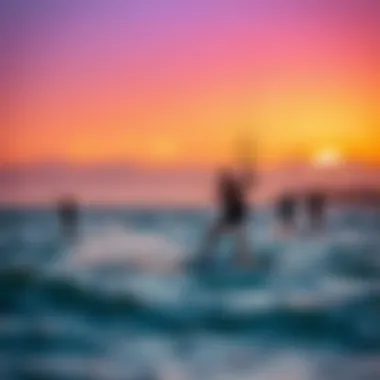
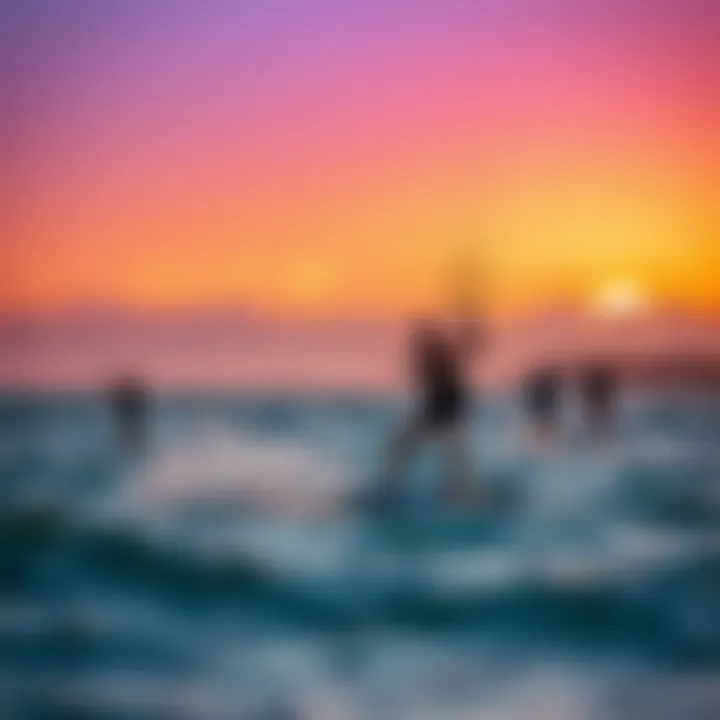
The philosophy of leaving no trace hinges on minimizing our footprint in nature. It’s about taking just memories and leaving nothing but ripples. Kiteboarders should adopt these practices not just out of obligation but as part of a lifestyle that values nature. Here are several key practices to keep in mind:
- Plan Ahead: Before heading out, look up the regulations of your chosen spot. Sometimes, these places have specific instructions on where to set up and where to avoid.
- Pack It In, Pack It Out: Carry all trash back with you, along with any waste created during your outing. This includes snack wrappers, medical supplies, or any paraphernalia. Nature doesn’t need our leftovers.
- Minimize Campfire Impact: If camping, choose established sites and limit fires to designated areas. Always burn down existing wood and avoid cutting trees or branches for fuel.
- Stick to Established Paths: When navigating to your kiteboarding spot, avoid trampling over fragile vegetation and wildlife habitats. Staying on trails is not just a courtesy but a necessity.
"Every bit counts, like droplets making up a stream. When kiteboarders commit to a cleaner practice, we preserve the sanctity of our playgrounds."
Supporting Local Ecosystems
Kiteboarding can provide a jolt to local economies by fueling tourism, yet it's essential to support the ecosystems that welcome us. Sustainability should be at the forefront of our engagements with local communities and their landscapes. Here’s how we can give back while simultaneously enriching our kiteboarding experiences:
- Engage with Local Conservation Initiatives: Many coastal areas have programs aimed at preserving marine life or restoring habitats. Participating in these can create lasting relationships and a deeper understanding of the area.
- Use Eco-Friendly Gear: Opt for kiteboarding equipment and apparel made from sustainable materials. This choice not only benefits the environment, but it may also help create a market for other brands to follow suit.
- Educate Fellow Riders: Share knowledge about local fauna and flora with newcomers. Each rider that understands the importance of their environment multiplies the effort in conservation.
- Support Local Businesses: When you forage for equipment repairs, lodging, or meals, choose local over commercial. This helps ensure the community thrives while they look after the beaches you love.
Kiteboarding should never only be about the rush of the wind and surf; it also encompasses the responsibility we hold toward our surroundings. By adopting a mindset focused on environmental considerations, we can weave the thrill of kiteboarding seamlessly into a broader narrative of stewardship, ensuring our sport is enjoyed responsibly and sustainably.
Connecting with the Kiteboarding Community
Being part of the kiteboarding community is like being part of an extended family; it creates a network where shared experiences, advice, and camaraderie flourish. This community, spanning continents and cultures, brings together enthusiasts, instructors, and novices alike. Understanding the importance of this connection can enhance one’s travel kiteboarding experience immeasurably.
The kiteboarding world is more than just a sport; it’s a lifestyle that can be enriched through collaboration and interaction with others. Whether you're carving waves in Brazil or gliding across the tranquil waters in Tarifa, connecting with fellow kiteboarders brings a wealth of benefits:
- Shared Knowledge: Riders at any skill level can glean valuable tips from fellow enthusiasts. Novices can learn about gear setups while experienced riders may exchange insights on advanced tricks or safety protocols.
- Local Expertise: Every kiteboarding spot comes with its own set of wind conditions and local rules. Engaging with local communities helps you navigate these nuances effectively, ensuring a safer and more enjoyable experience.
- Inspiring Camaraderie: Kiteboarding can sometimes feel isolating, especially when traveling solo. Joining community events fosters friendships that can last a lifetime, turning a solitary pursuit into a shared journey.
Lastly, the community can drive environmental awareness as well. Many kiteboarding enthusiasts participate in beach clean-ups or conservation efforts, thus ensuring that the sport continues to thrive for future generations.
Participating in Events and Competitions
Engaging in kiteboarding events and competitions can be both exhilarating and instructive. From local contests to international championships, every event provides opportunities to showcase skills and learn from the best. Participating isn’t just about competition; it’s an avenue for personal growth and community bonding.
- Experience: Competing allows for testing skills in real conditions. Every heat offers a new situation, testing the ability to adapt and react, which you can learn from after the adrenaline fades.
- Recognition: Winning or even placing in an event can build confidence and motivate further progression in the sport.
- Networking: Events attract top riders, judges, and sponsors; it’s the perfect setting to meet industry professionals and forge valuable connections.
To get started, check platforms like eventbrite.com for upcoming kiteboarding competitions worldwide. Whether you’re a pro or just starting, there’s always a spot for you!
Networking with Other Riders
Networking with fellow riders amplifies the kiteboarding experience in numerous ways. Whether through local meet-ups, online forums, or social media groups, the opportunities to connect are plentiful.
- Online Communities: Platforms like Reddit or Facebook have groups dedicated to kiteboarding where members share insights, experiences, and organize meet-ups. Check forums like reddit.com/r/kiteboarding for discussions ranging from gear recommendations to travel tips.
- Local Clubs and Schools: Joining local kiteboarding clubs or schools can provide ongoing learning and support mechanisms. They often organize group outings or events, which can strengthen bonds among riders.
"The kiteboarding community thrives on shared passion and driven individuals. Each new friend can introduce you to unique spots or tips to take your skills to the next level."
In summary, connecting with the kiteboarding community is essential to both personal growth and enjoying the journey, transforming kiteboarding from a solo activity into an enriching social experience.
Future Trends in Travel Kiteboarding
As the world of travel kiteboarding continues to evolve, staying abreast of emerging trends offers riders both an advantage and a sense of connection to the sport. Recognizing future trends is not merely about knowing what’s hot; it’s about understanding how these movements can shape our experiences on the water, enhance safety, and promote sustainability. The trends discussed here revolve around technological innovations and sustainable practices, both crucial in ensuring that kiteboarding remains viable and enjoyable for generations to come.
Technological Innovations
The rapid pace of technological advancement is making a noticeable impact on kiteboarding. Innovations in kite materials, design, and control systems are some areas witnessing significant growth. Here are a few exciting developments worth noting:
- Improved Materials: Today's kites are made from lighter and more durable materials, allowing for better performance and longevity. For instance, fabrics like ripstop nylon are giving way to advanced composites that resist tearing and wear, ultimately leading to safer kiteboarding experiences.
- Smart Control Systems: Some brands are integrating smart technology into equipment. For example, harnesses with built-in sensors can provide real-time feedback on performance metrics, helping riders fine-tune their techniques. This level of data can even aid instructors in tailoring lessons for beginners.
- Eco-Friendly Innovations: The trend towards sustainability has also pressured manufacturers to innovate. Kiteboards with recycled materials are becoming more common, aligning with environmentally-conscious riders who want to minimize their footprint.
These innovations are enhancing how kiteboarders interact with their environment and their equipment. As these technologies become more inclusive, they offer riders the opportunity to elevate their skills while ensuring safety and efficiency.
Sustainable Practices
The push for sustainability in travel kiteboarding is gaining traction, as riders and companies alike become more aware of their environmental responsibilities. Adopting sustainable practices goes beyond merely enjoying the sport; it’s about ensuring that future generations can enjoy the same surf and skies. Some notable areas of focus include:
- Leave No Trace: Kiteboarders are being encouraged to embrace 'Leave No Trace' principles, which advocate for minimal impact on natural areas. This includes packing out what you pack in, avoiding trampling sensitive vegetation, and never disturbing local wildlife.
- Community Initiatives: Many kiteboarding communities are organizing beach clean-ups and habitat restoration projects, fostering a connection between the sport and its surrounding ecosystems. Engaging in these activities not only beautifies the sport's playground but also builds a network of environmentally aware riders.
- Support for Local Economies: When choosing kiteboarding destinations, opting for local, small-scale operations can have significant positive impacts. By supporting local businesses, riders can contribute to the economy in a sustainable way that emphasizes environmental stewardship.
Incorporating these sustainable practices is vital as kiteboarding grows in popularity. Fostering a culture of responsibility among riders not only preserves natural habitats but also promotes a sense of community.
"The future of kiteboarding hinges not just on the advancements in equipment but also on our collective commitment to preserving the waves and winds we cherish."
Epilogue: Embracing the Kiteboarding Lifestyle
Embracing the kiteboarding lifestyle is not just about riding the waves; it’s about adopting a whole mindset that values adventure, community, and respect for nature. Kiteboarding can offer immense joy, but it also requires commitment, understanding, and a willingness to continually learn.
The Thrill and Connection to Nature
At its essence, kiteboarding melds the exhilaration of flying a kite with the freedom of gliding on water. It brings you closer to nature, allowing you to experience the elements in a way that few activities can. The rush of the wind, the splashes of sea spray, and the expansive horizons can create a fulfilling sense of connection with the environment. When you're out on the water, it’s easy to appreciate the beauty of the world around you, forging bonds with both nature and fellow enthusiasts.
Building Community
Kiteboarding inherently fosters community among riders. It’s a sport where sharing tips and experiences enhances everyone’s enjoyment and understanding. Local kiteboarding schools, social media platforms like Reddit, and events like competitions can serve as platforms to connect with others. Whether you're a seasoned kiteboarder or a newcomer, engaging with the community will provide support and camaraderie. Riders can exchange insights about their favorite travel destinations, gear recommendations, or techniques, enriching one another's journeys.
The Lifelong Learning Curve
One of the key aspects of the kiteboarding lifestyle is recognizing that it is a continuous learning process. From mastering new tricks to understanding the intricacies of changing wind patterns, the road is paved with challenges and rewards. As you progress, you continually adapt and improve, making it more than just a sport but an evolving passion. The pursuit of knowledge and skill enhancement ensures that each session on the water can be uniquely rewarding.
Respect for the Environment
Embracing the kiteboarding lifestyle also encompasses an ethos of environmental stewardship. Riders are often some of the earliest advocates for preserving the beaches and waterways they cherish. Practicing 'Leave No Trace' principles, advocating for sustainable practices, and supporting local initiatives are intrinsic to the kiteboarding community. It’s about not only enjoying the elements but also protecting them for future generations.
In summary, embracing the kiteboarding lifestyle goes beyond just the act of kiteboarding; it's about weaving together the joys of adventure, the strength of community, the excitement of continuous learning, and the commitment to respecting our natural world. This holistic approach enriches your time on the water and can transform your perspective on life itself. By soaking in every aspect of this lifestyle, from gear to technique to destination, kiteboarding becomes more than a sport; it evolves into a way of living.















